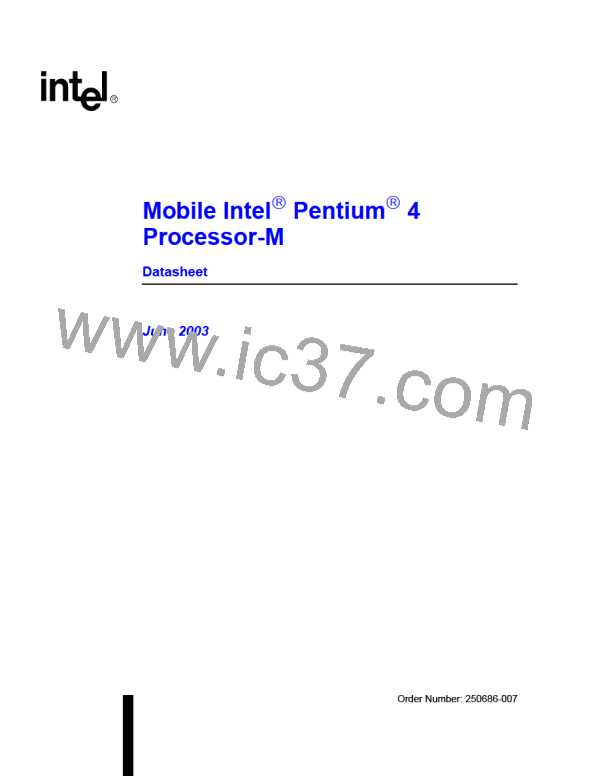System Bus Signal Quality Specifications
3.3
System Bus Signal Quality Specifications and
Measurement Guidelines
3.3.1
Overshoot/Undershoot Guidelines
Overshoot (or undershoot) is the absolute value of the maximum voltage above the nominal high
voltage (or below VSS) as shown in Figure 30. The overshoot guideline limits transitions beyond
VCC or VSS due to the fast signal edge rates. The processor can be damaged by repeated overshoot
or undershoot events on any input, output, or I/O buffer if the charge is large enough (i.e., if the
over/undershoot is great enough). Determining the impact of an overshoot/undershoot condition
requires knowledge of the magnitude, the pulse direction, and the activity factor (AF). Permanent
damage to the processor is the likely result of excessive overshoot/undershoot.
When performing simulations to determine impact of overshoot and undershoot, ESD diodes must
be properly characterized. ESD protection diodes do not act as voltage clamps and will not provide
overshoot or undershoot protection. ESD diodes modelled within Intel I/O buffer models do not
clamp undershoot or overshoot and will yield correct simulation results. If other I/O buffer models
are being used to characterize the Mobile Intel Pentium 4 Processor-M system bus, care must be
taken to ensure that ESD models do not clamp extreme voltage levels. Intel I/O buffer models also
contain I/O capacitance characterization. Therefore, removing the ESD diodes from an I/O buffer
model will impact results and may yield excessive overshoot/undershoot.
3.3.2
Overshoot/Undershoot Magnitude
Magnitude describes the maximum potential difference between a signal and its voltage reference
level. For the Mobile Intel Pentium 4 Processor-M both are referenced to VSS. It is important to
note that overshoot and undershoot conditions are separate and their impact must be determined
independently.
Overshoot/undershoot magnitude levels must observe the absolute maximum specifications listed
in Table 30 through Table 33. These specifications must not be violated at any time regardless of
bus activity or system state. Within these specifications are threshold levels that define different
allowed pulse durations. Provided that the magnitude of the overshoot/undershoot is within the
absolute maximum specifications, the pulse magnitude, duration and activity factor must all be
used to determine if the overshoot/undershoot pulse is within specifications.
3.3.3
Overshoot/Undershoot Pulse Duration
Pulse duration describes the total time an overshoot/undershoot event exceeds the overshoot/
undershoot reference voltage (maximum overshoot = 1.700 V, maximum undershoot = -0.400 V).
The total time could encompass several oscillations above the reference voltage. Multiple
overshoot/undershoot pulses within a single overshoot/undershoot event may need to be measured
to determine the total pulse duration.
Mobile Intel Pentium 4 Processor-M Datasheet
55

 INTEL [ INTEL ]
INTEL [ INTEL ]